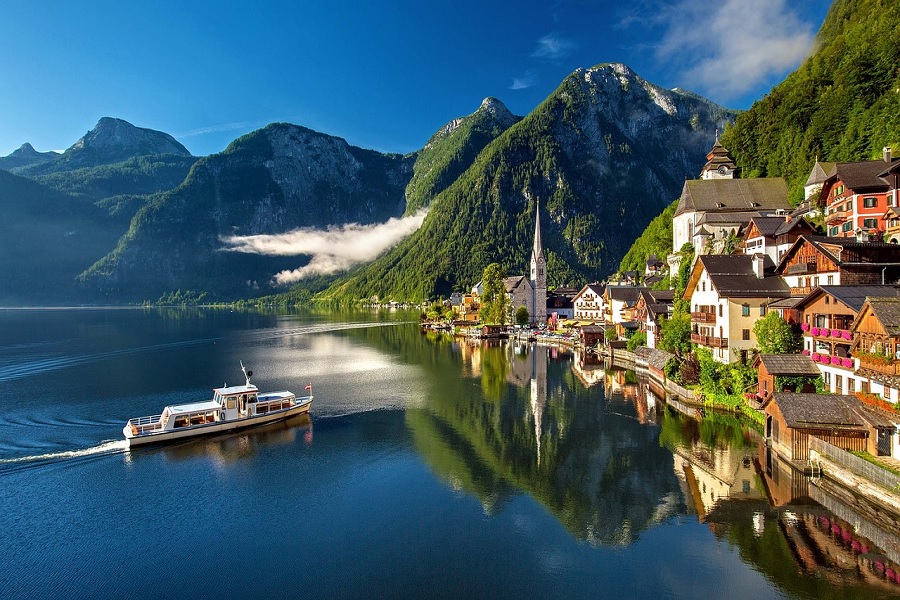The Rise of International Tourism: Trends, Opportunities, and Challenges

Introduction
International tourism is a dynamic and rapidly evolving sector within the global economy. With the rise of global connectivity, improved infrastructure, and the growing desire for travel, international tourism has become more accessible than ever before. The sector not only plays a crucial role in boosting the economy but also fosters cross-cultural exchanges and enhances global understanding. This article explores the latest trends in international tourism, opportunities for the industry, and the challenges it faces in the modern world.
Trends Shaping International Tourism
-
Post-Pandemic Recovery
The COVID-19 pandemic had a profound impact on global tourism, with international travel coming to a standstill in 2020. However, as countries reopen their borders, there has been a notable resurgence in international tourism. Many destinations are witnessing a pent-up demand for travel, with tourists eager to explore new locations after long periods of lockdown and restrictions. This recovery has been especially noticeable in regions such as Europe, Southeast Asia, and the Middle East.
-
Sustainable Travel
Sustainability has become a central concern for travelers, with an increasing number seeking eco-friendly travel experiences. Tourists are prioritizing destinations that emphasize environmental conservation, responsible tourism, and reducing carbon footprints. This shift has led to the rise of sustainable tourism practices, such as eco-lodges, wildlife safaris that promote conservation, and transportation methods like electric buses and trains. Destinations are also incorporating green initiatives into their tourism infrastructure, making sustainability a key factor in travelers' decisions.
-
Experience Over Materialism
The modern traveler is more focused on experiences than material possessions. Authentic travel experiences such as exploring local cultures, learning new skills, and engaging with local communities are highly sought after. This has given rise to niche tourism categories like adventure tourism, culinary tourism, wellness retreats, and cultural immersion programs. Travelers are moving away from traditional sightseeing to deeper, more meaningful experiences that connect them with the essence of a destination.
-
Technology and Innovation
The integration of technology into travel has transformed how people plan and experience their vacations. Digital platforms, virtual tours, and augmented reality experiences have made it easier for travelers to research and explore destinations from the comfort of their homes. In addition, AI-powered tools for booking flights and accommodations, personalized travel itineraries, and contactless payments have enhanced the overall travel experience.
-
Health and Wellness Tourism
Health and wellness tourism has seen substantial growth, especially as people become more aware of mental and physical well-being. Travelers are increasingly looking for destinations that offer stress relief, fitness activities, and holistic wellness programs. From yoga retreats in India to spa vacations in Switzerland, health-focused travel has become a key segment in international tourism
Opportunities for the International Tourism Industry
-
New Emerging Markets
Emerging economies, particularly in Asia, Africa, and Latin America, present significant growth opportunities for international tourism. As middle-class populations rise in countries like India, China, and Brazil, the demand for international travel has increased. These new markets are driving the growth of inbound and outbound tourism, creating new revenue streams for both established and emerging destinations.
-
Digital Transformation
As technology continues to advance, the tourism industry has vast opportunities to leverage digital tools for better customer engagement, streamlined services, and operational efficiency. The use of big data and predictive analytics can enhance personalized travel offerings, helping businesses cater to specific traveler preferences. Additionally, smart tourism solutions, such as mobile apps and digital concierge services, are improving the overall travel experience.
-
Collaborations and Partnerships
Tourism boards, airlines, hotels, and local businesses are increasingly collaborating to create integrated travel packages and experiences. Partnerships between governments and private sectors can help boost infrastructure, streamline visa processes, and create attractive incentive programs to encourage international travel. Destination marketing organizations (DMOs) play a critical role in promoting their regions as safe, desirable places to visit.
Challenges in International Tourism
-
Over-Tourism
While tourism can bring significant economic benefits, it can also lead to the problem of over-tourism, where popular destinations are overwhelmed by an influx of visitors. This not only strains local resources but can also lead to environmental degradation and a loss of cultural authenticity. Managing tourism flows through policies like tourist caps, off-season travel incentives, and sustainable practices is essential for mitigating these impacts.
-
Safety and Security Concerns
Political instability, natural disasters, and health emergencies are significant risks for international tourism. Recent events, including the COVID-19 pandemic and geopolitical tensions, have shown how vulnerable the sector can be. Ensuring the safety of travelers through enhanced health protocols, travel advisories, and crisis management plans is crucial to maintaining confidence in international travel.
-
Rising Costs
With inflation and increased operating costs, travel prices are on the rise, including flight costs, accommodation rates, and tour prices. This price hike may deter budget-conscious travelers and impact overall demand, especially for mid-range and budget segments. It is vital for tourism operators to find innovative ways to offer value for money, ensuring affordability for all types of travelers.
-
Environmental Impact
While sustainable travel is on the rise, the overall environmental footprint of tourism remains a concern. International tourism contributes significantly to greenhouse gas emissions, particularly through air travel. Efforts to reduce carbon emissions, promote eco-friendly travel options, and support destinations with green certifications are critical in making tourism more environmentally responsible.
Conclusion
International tourism is a vibrant sector that continues to evolve in response to changing consumer preferences, technological advancements, and global challenges. As the world recovers from the effects of the pandemic, there is a renewed focus on sustainability, meaningful travel experiences, and leveraging technology to enhance the tourism experience. However, the sector must also address the challenges of over-tourism, safety concerns, and environmental impact to ensure that tourism remains a force for good in the global economy. With the right balance of innovation, responsibility, and cooperation, international tourism can continue to thrive, offering economic, cultural, and environmental benefits to travelers and destinations alike.
























